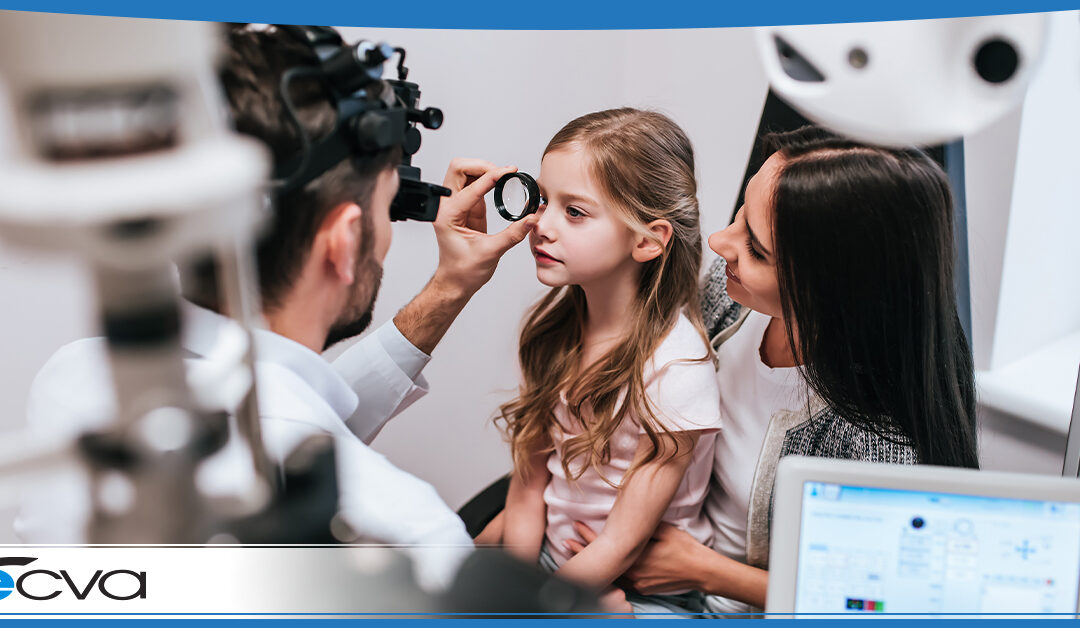Many parents aren’t familiar with all of the conditions that can impact their child’s eyes or vision. Pediatric ptosis, while common, isn’t necessarily widely known. If you are wondering what pediatric ptosis is, what the signs of pediatric ptosis are, and how the condition is treated, here’s what you need to know.
What Is Pediatric Ptosis?
Ptosis is an eye condition where the upper lid droops down or doesn’t open completely, causing it to obstruct the eye and physically block the visual field. Pediatric ptosis focuses on the condition when it impacts a child, including infants, toddlers, and younger kids.
Pediatric ptosis can be caused by weaker eyelid muscles as well as excess eyelid skin. In some cases, it’s congenital, meaning it is present at birth. In others, it develops over time. Both trauma and neurological issues can be a cause and certain habits, like excessive eye rubbing.
With pediatric ptosis, quick treatment is usually a necessity. Otherwise, the obstruction to the visual field can negatively impact eye development, leading to additional vision issues over time.
Additionally, identifying the root cause of the condition is a must. That way, if the ptosis is a symptom of another medical issue, the underlying condition can be determined and appropriately addressed.
Signs of Pediatric Ptosis
In some cases, pediatric ptosis is outwardly noticeable. It will be apparent when looking at the child, as the eyelid either doesn’t move properly or remains low even when open.
Some presentations can be more subtle. However, other symptoms indicate potential ptosis, including:
- Head tilting when trying to view an object
- Headaches or eye fatigue
- Running into items that are hanging from above
- Delayed walking or crawling
- Distorted, blurred, or double vision
- Eye misalignment
- Dizziness or balance issues
- Diminished vision acuity
Many of these symptoms are potentially associated with ptosis and other conditions, as well. As a result, it’s best to see your eye doctor if any of them develop, even if eyelid drooping doesn’t seem to be present.
Pediatric Ptosis Treatment
If your child has ptosis, there may be a few treatment options. Which approach is best usually depends on the underlying cause along with the severity of the symptoms.
For minor cases, nonsurgical treatment may be sufficient. This can include using eye drops or patching to strengthen the weaker eye, specialty eyeglasses, or a ptosis crutch, a device that supports the eyelid. If weaker muscles are the core issue, eye exercises may also be part of the treatment plan.
In some cases, surgical intervention is a necessity. Precisely which procedure is required may vary. If an issue with the underlying muscle structure is involved, surgically tightening them may be the best approach. If excess skin is responsible, blepharoplasty may be the right option.
Ultimately, your eye doctor can determine which treatment course is ideal. They’ll assess your child’s ptosis, identify the cause, and gauge the severity. Then, they can make an appropriate plan, ensuring the pediatric ptosis is addressed correctly.
At ECVA, our staff works diligently to care for the eye health of patients of all ages, ensuring they can see clearly today, tomorrow, and well into the future. If you have a child with signs of pediatric ptosis or if you or your children simply haven’t had eye exams recently, schedule an appointment at your closest ECVA clinic today.


